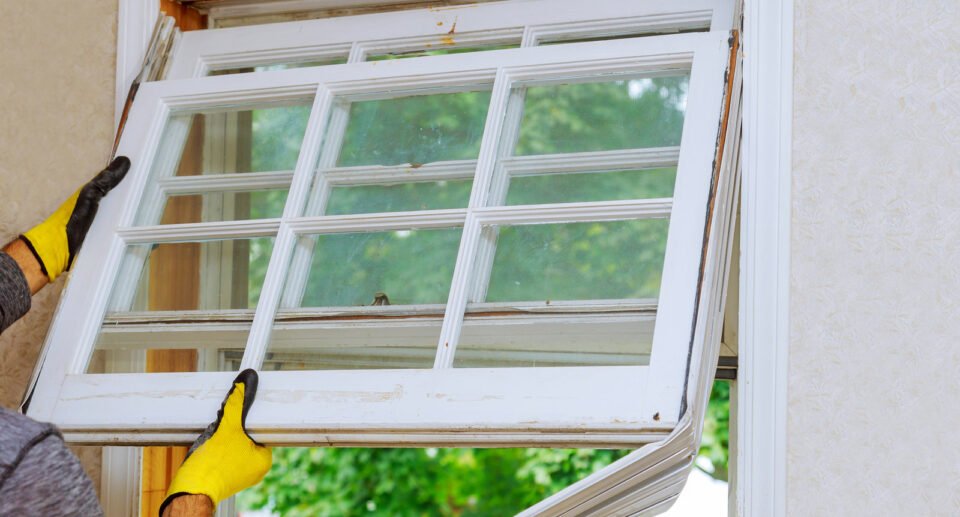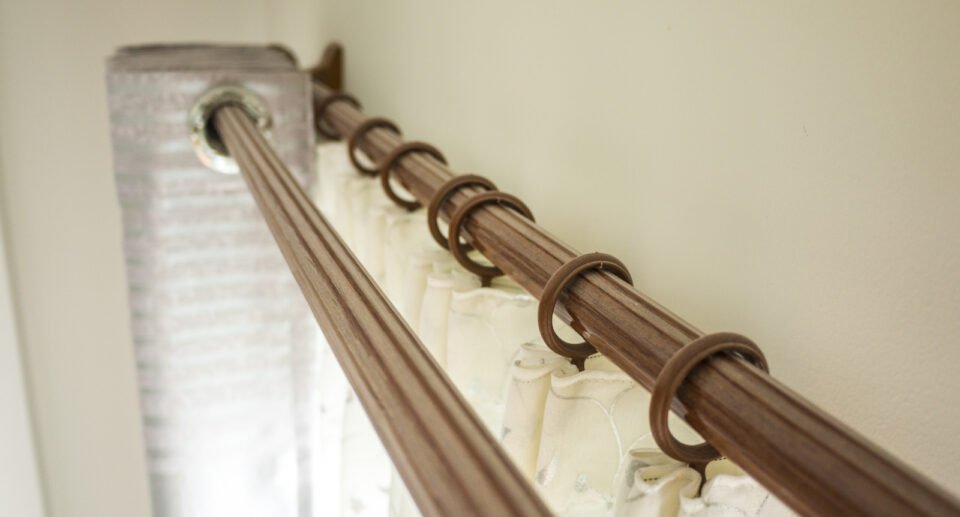UPVC vs Composite Doors: An In-depth Comparison for Homeowners

When it comes to selecting the right door for one’s home, the choice often comes down to two popular materials: uPVC and composite. As a homeowner, I understand the importance of having a secure and aesthetically pleasing front or back door, given it’s both the first line of defence against intruders and a significant aspect of the home’s curb appeal.
Each material has its inherent benefits and considerations – uPVC, or unplasticised polyvinyl chloride, is known for its durability, energy efficiency, and lower cost, while composite doors utilise a combination of materials to offer increased strength, security, and a wider variety of design options.
Moreover, the material you choose for your door can have significant implications for not just security and design, but also for maintenance and long-term costs.
While uPVC doors are typically less expensive initially and easier to maintain, composite doors often offer better resilience to weathering and can have a more substantial look and feel, which may be more in line with the aesthetic a homeowner might be seeking.
Importantly, the decision between uPVC and composite materials goes beyond upfront costs and encompasses factors such as thermal efficiency, longevity, and the overall value it adds to one’s property.
Key Takeaways
- Selection between uPVC and composite doors impacts security, design, and cost.
- uPVC doors are cost-effective and low maintenance, while composite doors provide superior strength and design versatility.
- The right door choice should consider long-term value, reflecting both the homeowner’s style and functional requirements.
Material Comparison between uPVC and Composite Doors

In assessing UPVC and composite materials for doors, I’ll focus on durability, energy efficiency, design, maintenance, and security features. These factors will guide you towards the ideal choice for your home or project.
Durability and Longevity
Composite: Known for a robust blend of materials, composite doors boast impressive durability. They’re typically comprised of wood, insulating foam, and a thermoplastic skin, which culminate in a product that withstands weather elements and general wear effectively. Their lifespan can often surpass 30 years with proper care.
UPVC: While uPVC doors are resilient and resist warping, discolouration, and rot, they generally don’t match the lifespan of composite doors. However, with minimal maintenance, uPVC doors can last up to 20 years.
Energy Efficiency and Insulation
Composite: My examination reveals that the layered structure of composite doors delivers superior thermal efficiency. Their thickness and composition significantly reduce heat transfer, which could result in lower energy bills.
UPVC: UPVC doors have decent insulation properties, mainly due to their sealed frame and double-glazed options. This means they are also effective at keeping homes warm, though not quite at the level of composite doors.
Aesthetics and Design Options
Composite: Composite doors excel with diverse design options, ranging from modern to traditional styles. Finishes can mimic timber and a spectrum of colours, enabling bespoke aesthetics to suit unique preferences.
UPVC: UPVC doors present a clean and simple appearance with a somewhat limited colour and style range. However, they provide a uniform and contemporary look that may appeal to many.
Maintenance and Upkeep
Composite: Low maintenance is a highlight of composite doors. They are easily cleaned with a damp cloth and don’t require painting or varnishing to maintain their appearance.
UPVC: Comparable in terms of maintenance, uPVC doors also require little attention — an occasional wipe down keeps them looking fresh. Unlike composites, they may sometimes need targeted uPVC cleaning products for stubborn stains.
Security Features
Composite: Composite doors typically incorporate advanced security elements such as multi-point locking systems. Their solid construction adds to their secure nature, offering peace of mind.
UPVC: UPVC doors also frequently include multi-point locking systems. While secure, their overall construction might not provide the same level of robustness against forced entry as composites.
You might also want to read – How to Fit an Internal Door: A Step-by-Step Installation Guide
Cost Comparison between UPVC & Composite Doors
When I consider the financial aspect of installing doors, I’m aware that UPVC doors are generally seen as the more cost-effective option compared to composite doors. The initial outlay for a UPVC door is often significantly lower priced with average differences in cost being around £250 less for a UPVC door compared to a composite counterpart.
| Door Type | Average Cost |
|---|---|
| UPVC | £500 – £1000 |
| Composite | £800 – £1500 |
However, I must take into account the long-term value. Although composite doors come with a higher price tag, they are usually more robust and offer better security, which can be seen as an investment in my home’s safety and energy efficiency. Some composite doors feature a solid timber core, potentially enhancing insulation and contributing to energy cost savings over time.
When I’m on a tight budget, UPVC doors might seem like the more affordable choice. But, I’m also conscious that the value for money isn’t solely based on the initial outlay. I’m looking at durability and maintenance costs too. Composite doors are known to withstand weather conditions better, which may reduce the need for costly repairs or replacements.
From my perspective, it’s crucial to weigh both the short-term expenses and the long-term benefits. If I’m seeking a balance between cost and quality with a lean towards long-term savings, a composite door could justify its upfront cost. On the contrary, if my immediate budget is my main constraint and I need a solution that is less expensive upfront, a UPVC door would meet my needs.
Which is a right choice uPVC or Composites Doors?
When I’m advising homeowners on selecting the best door for their home, it’s imperative to consider both the functional aspects and the aesthetic appeal that each door type brings. uPVC doors have long been a popular choice due to their cost-effectiveness and low maintenance. However, if I’m working with a modern home or period property, aesthetic coherence and security features become my main focus.
For a modern home, composite doors offer a range of styles and finishes that complement contemporary design. Their durability and robust construction, often featuring a solid timber core, convey a sense of solidity and security. I’ve seen that they come with a higher price tag, but their longevity can make them a wise investment for many. If my clients prefer a wood-like aesthetic, then composite doors are usually my recommendation.
In the case of a period property, the authentic look and feel of the door can be quite important. While uPVC doors can look somewhat generic, manufacturers have made strides in offering more traditional designs within the uPVC ranges. It’s a budget-friendly option that doesn’t skimp on weatherproofing qualities, which are crucial in the UK climate.
Here’s a quick breakdown to aid decision-making:
- Cost: uPVC doors are generally more affordable.
- Maintenance: uPVC doors are lower in maintenance; a wipe down usually suffices.
- Security: Composite doors are typically more secure.
- Insulation: Both offer good thermal insulation, but composite edges ahead.
- Aesthetics: Composite doors tend to have a more authentic look.
- Longevity: Generally, composite doors have a longer lifespan.
For me, the right choice hinges on balancing these factors with the specific needs of the homeowner, whether that’s prioritising security, matching the style of their home, or managing their budget.
You might also want to read – Comparing Crittall Internal Doors with Aluspace and Unbranded Options: A Cost and Quality Analysis
Frequently Asked Questions
In this part, I’ll explore the nuances between composite and uPVC doors through a series of common queries that people often have when weighing up these options.
What distinguishes composite doors from uPVC in terms of durability?
Composite doors are renowned for their durability because they’re made from a combination of materials such as wood, uPVC, insulating foam, and glass-reinforced plastic, which provide strength and longevity. uPVC doors, while also durable, may not provide the same level of robustness over time, as they are primarily made of plastic.
How does thermal efficiency compare between composite and uPVC doors?
Thermal efficiency is one of the key considerations when selecting a door. Composite doors typically offer higher thermal efficiency due to their construction, keeping homes warmer and reducing energy bills. uPVC doors also provide decent insulation but might not perform to the same standard as composite doors.
Can you outline the initial and long-term costs associated with composite versus uPVC doors?
Initially, composite doors come with a higher price tag compared to uPVC doors due to the materials and construction process involved. However, considering the long-term perspective, composite doors could be more cost-effective due to their extended lifespan and the potential for less maintenance and energy savings.
What are some common issues one might encounter with composite doors?
Some possible issues with composite doors include potential discolouration and scratching.
How can I identify whether my door is made from composite material or uPVC?
To identify if your door is composite or uPVC, examine its surface texture and weight. Composite doors typically have a textured, grainy appearance and feel heavier due to the blend of materials within, whereas uPVC doors have a smoother, consistent plastic finish and are lighter.
In terms of security features, how do composite doors measure up against uPVC doors?
In security terms, composite doors are often perceived as being more secure because of their solid construction. They often come equipped with multipoint locking systems and reinforced frames. uPVC doors also offer good security features but may not match the sturdiness provided by composite doors, especially if the composite door has a solid timber core.

Hello, I’m Keith Jones. I’m the author and head of content here of door and window guide. I’ve been in the window and door industry for over 10 years in the UK and North America. I’ve had quite a few roles during my career mainly in Worldwide sales. I’m now semi retired so I thought I’d put my knowledge to good use educating people about all they might need to know about door and window related topics.






